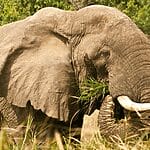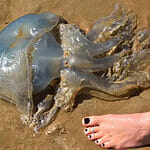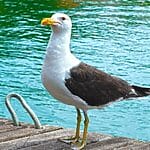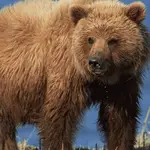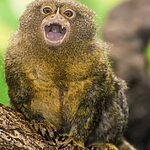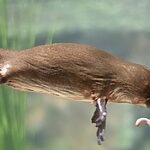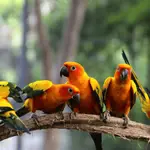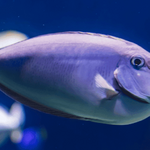Dive into the fascinating world of reptiles with our comprehensive List of Reptiles featuring 21 incredible species from around the globe. From the venomous black mamba to the ancient tuatara, this list showcases the remarkable diversity found within the reptile kingdom.
Discover how these cold-blooded creatures have adapted to thrive in various habitats and learn about their unique characteristics, diets, and roles within ecosystems.
Whether you’re a reptile enthusiast or simply curious about these captivating animals, join us as we explore the lives of snakes, lizards, turtles, tortoises, and crocodilians in this enthralling list of reptiles.
Quick Answer: Snakes, lizards, turtles, tortoises, and crocs – from adders to tuataras, these cold-blooded critters come in all shapes and sizes, each with their own rad adaptations.
Key Takeaways:
- Reptiles are a diverse group that includes snakes, lizards, turtles, tortoises, and crocodilians, each with unique characteristics and adaptations.
- Many reptile species play crucial roles in their ecosystems as both predators and prey.
- Conservation efforts are vital for protecting endangered reptile species and maintaining the balance of nature.
List Of 21 Reptiles
Reptiles are a diverse group of animals that include snakes, lizards, turtles, tortoises, and crocodilians. This list covers a variety of fascinating reptile species from around the world, each with their own unique characteristics and adaptations. Reptiles play important roles in ecosystems and their conservation is crucial for maintaining the balance of nature.
1. Adder (Common European Viper)

The adder, also known as the common European viper, is a venomous snake found throughout Europe. Adults typically reach lengths of 50-70 cm and have a distinctive zigzag pattern along their backs. The adder is the UK’s only venomous snake species, but it is generally shy and rarely poses a threat to humans unless provoked.
These snakes prefer a variety of habitats, including heathlands, woodlands, and rocky hillsides. Their diet primarily consists of small mammals, lizards, and amphibians, which they subdue with their venom.
2. African Spurred Tortoise (Geochelone sulcata)
The African spurred tortoise, also known as the sulcata tortoise, is the largest mainland tortoise species. Adults can weigh up to 100 kg and have distinctive spur-like scales on their legs.
These tortoises are native to the Sahara Desert and the Sahel regions of Africa, where they feed on a variety of grasses, flowers, and fruits. In captivity, it is essential to provide African spurred tortoises with a spacious, well-ventilated habitat that mimics their natural environment and a diet rich in fiber and low in protein.
3. Alligator Snapping Turtle (Macrochelys temminckii)
The alligator snapping turtle is a large freshwater turtle species native to the southeastern United States. These turtles can reach lengths of up to 80 cm and weigh over 100 kg, making them one of the heaviest freshwater turtle species in the world.
Alligator snapping turtles have powerful jaws and a unique worm-like lure on their tongue, which they use to attract fish and other prey. They prefer slow-moving rivers, canals, and swamps, where they feed on a variety of aquatic animals, including fish, crustaceans, and even small turtles.
4. American Alligator (Alligator mississippiensis)
The American alligator is a large crocodilian species found in the southeastern United States. Adult males can reach lengths of up to 4.5 meters and weigh over 450 kg. These powerful reptiles have armoiur-like scales and a muscular tail that they use for swimming and defense.
American alligators are highly adaptable and can thrive in various habitats, including freshwater wetlands, swamps, and even brackish water. As apex predators, they play a crucial role in maintaining the balance of their ecosystems.
Thanks to successful conservation efforts, American alligator populations have recovered from near-extinction and are now thriving in many parts of their range.
5. Black Mamba (Dendroaspis polylepis)
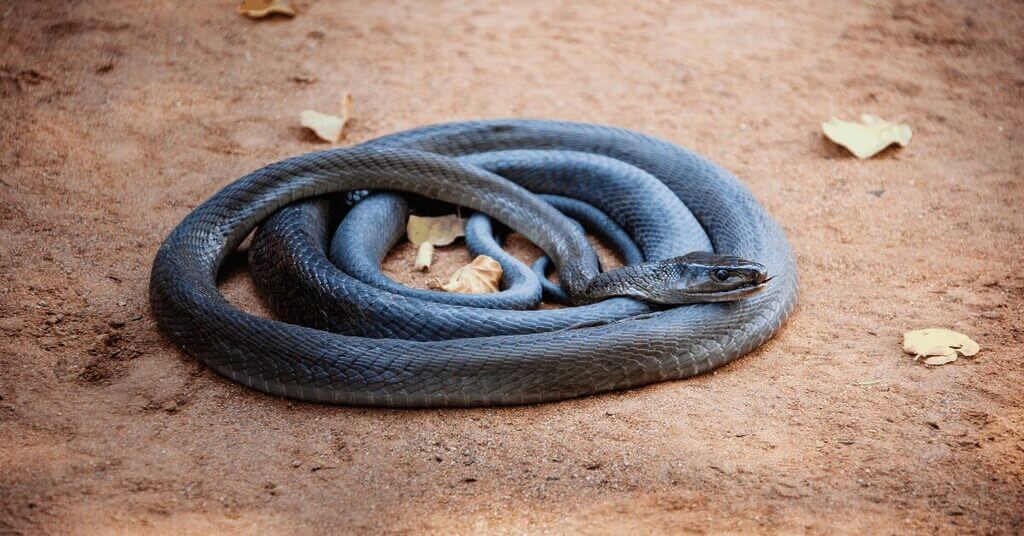
The black mamba is one of the world’s fastest and most venomous snakes, native to sub-Saharan Africa. These sleek, black snakes can grow up to 4 meters in length and are known for their speed, agility, and highly potent venom. Black mambas are often found in savannas, rocky hills, and sparse woodlands, where they hunt for small mammals and birds.
When threatened, they are known to be highly aggressive and will not hesitate to strike repeatedly. In the event of a black mamba bite, prompt administration of antivenin is crucial for survival.
6. Frilled Lizard (Chlamydosaurus kingii)
The frilled lizard is a unique lizard species native to northern Australia and southern New Guinea. These lizards are named for their distinctive large, circular frill around their neck, which they can erect when threatened to make themselves appear larger and more intimidating.
Frilled lizards are arboreal, meaning they spend much of their time in trees, where they feed on insects and small vertebrates. When threatened, they are capable of bipedal locomotion, running on their hind legs to escape from predators.
7. Gharial (Gavialis gangeticus)
The gharial is a critically endangered crocodilian species native to the Indian subcontinent. These unique reptiles have a long, thin snout that is adapted for catching fish, their primary prey. Adult males can reach lengths of up to 6 meters, while females are smaller, typically reaching lengths of up to 4 meters.
The gharial’s endangered status is due to a combination of factors, including habitat loss, pollution, and entanglement in fishing nets. Currently, there are ongoing conservation efforts to protect and breed gharials in captivity for reintroduction into the wild.
8. Gila Monster (Heloderma suspectum)
The Gila monster is one of the few venomous lizard species, native to the southwestern United States and northwestern Mexico. These stout-bodied lizards have distinctive black and orange beaded scales and a powerful, venomous bite. Gila monsters are typically found in desert scrub and rocky foothills, where they feed on eggs and small mammals.
Due to their slow metabolism, they can go for long periods without food, storing fat in their tails for energy. Despite their venomous nature, Gila monsters are generally not aggressive towards humans and will only bite if provoked.
9. Green Anaconda (Eunectes murinus)
The green anaconda is the world’s heaviest snake species, native to the tropical regions of South America. These massive snakes can grow up to 9 meters in length and weigh over 200 kg.
Green anacondas have a distinctive dark green colouration with black oval spots and are well-adapted to a semi-aquatic lifestyle, often found in slow-moving rivers, swamps, and marshes. They are powerful constrictors and feed on a variety of large prey, including capybaras, deer, and even jaguars, which they constrict and swallow whole.
10. Green Sea Turtle (Chelonia mydas)
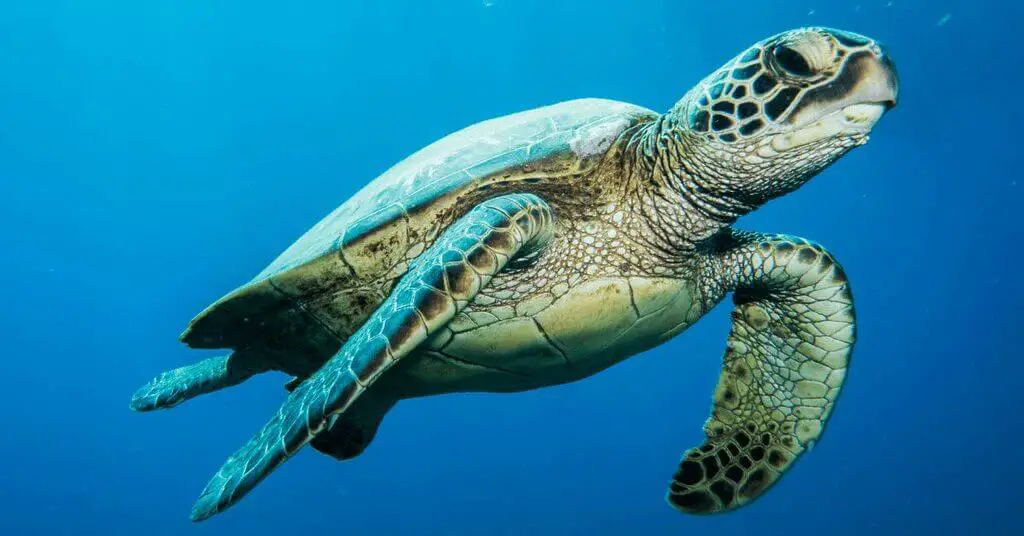
The green sea turtle is a large marine turtle species known for its long oceanic migrations. These turtles have a smooth, heart-shaped carapace and are named for the greenish colour of their fat, which is caused by their herbivorous diet of seagrasses and algae.
Green sea turtles play a crucial role in maintaining the health of seagrass beds, which provide habitat and food for a variety of marine species. However, they face numerous threats, including habitat loss, pollution, and poaching for their eggs and meat.
11. Inland Taipan (Oxyuranus microlepidotus)
The inland taipan is considered the world’s most venomous snake, native to the semi-arid regions of eastern central Australia. These slender snakes can grow up to 2.5 meters in length and have highly potent venom that is primarily adapted for hunting small mammals.
Inland taipans are typically found in cracked clay soils and abandoned animal burrows, where they lead a shy and reclusive lifestyle. Despite their highly potent venom, inland taipans are not considered a significant threat to humans due to their remote habitat and infrequent encounters.
12. Komodo Dragon (Varanus komodoensis)
The Komodo dragon is the world’s largest living lizard species, endemic to several Indonesian islands. These impressive reptiles can grow up to 3 meters in length and weigh over 70 kg. Komodo dragons have bacteria-laden saliva that can cause septicemia in their prey, making them highly effective predators.
As apex predators, they feed on a variety of large prey, including Timor deer and water buffalo. However, due to habitat loss, human encroachment, and illegal hunting, Komodo dragons are considered a vulnerable species.
13. Leatherback Sea Turtle (Dermochelys coriacea)
The leatherback sea turtle is the largest living turtle species, known for its long oceanic migrations across tropical and temperate waters worldwide. These unique turtles have a leathery carapace that lacks the typical bony plates found in other sea turtles, and they are capable of maintaining a higher body temperature than the surrounding water.
Leatherback sea turtles feed primarily on jellyfish and are threatened by entanglement in fishing gear, plastic pollution, and climate change.
14. Mojave Desert Tortoise (Gopherus agassizii)
The Mojave desert tortoise is a medium-sized tortoise species native to the Mojave and Sonoran deserts of the southwestern United States. These tortoises have a high-domed carapace and are adapted to survive in arid environments by storing water in their bladder.
Mojave desert tortoises are herbivorous and have a slow metabolism, allowing them to live up to 80 years in the wild. However, they face threats such as habitat loss, off-road vehicles, and the spread of respiratory diseases.
15. Nile Crocodile (Crocodylus niloticus)

The Nile crocodile is a large crocodilian species native to Africa and Madagascar. Adult males can reach lengths of up to 6 meters and have powerful jaws and armoiur-like scales.
Nile crocodiles are found in a variety of aquatic habitats, including rivers, lakes, and wetlands, where they feed on an opportunistic diet of fish, reptiles, birds, and mammals. These powerful predators are also known to be a significant threat to humans, and human-crocodile conflicts are a concern in many parts of their range. Conservation efforts aim to protect the species while minimising these conflicts.
16. Puff Adder (Bitis arietans)
The puff adder is a venomous snake species widely distributed across Africa and parts of the Middle East. These stout-bodied snakes can grow up to 1.5 meters in length and have distinctive chevron-shaped bands along their body. Puff adders have highly potent venom with hemotoxic effects, causing severe pain, swelling, and tissue damage in their victims.
Due to their widespread distribution and their tendency to rely on camouflage rather than fleeing when approached, puff adders are responsible for the most snakebite fatalities in Africa.
17. Saltwater Crocodile (Crocodylus porosus)
The saltwater crocodile is the largest living reptile species, native to the coastal regions of the Indian and Pacific Oceans. Male saltwater crocodiles can grow up to 6 meters in length and weigh over 1,000 kg, making them formidable predators with powerful jaws and armoiur-like scales.
These adaptable reptiles can thrive in a variety of habitats, from coastal mangroves and estuaries to freshwater rivers and swamps. As apex predators, saltwater crocodiles play a crucial role in their ecosystems, but their presence can also lead to human-crocodile conflicts. Conservation efforts focus on protecting the species while managing these conflicts.
18. Slow Worm (Anguis fragilis)
The slow worm is a legless lizard species native to Europe, West Asia, and North Africa. Despite their snake-like appearance, slow worms can be distinguished from snakes by their blinking eyelids and the presence of ear openings.
These lizards have smooth, glossy scales and are capable of autotomizing (shedding) their tail when threatened. Slow worms are typically found in grasslands, woodland edges, and gardens, where they feed on slugs and earthworms.
19. Spectacled Caiman (Caiman crocodilus)
The spectacled caiman is a small to medium-sized crocodilian species native to Central and South America. These caimans are named for the bony ridge between their eyes that resembles a pair of spectacles.
They also have four to five transverse bands on their body, which helps to distinguish them from other caiman species. Spectacled caimans are found in a variety of aquatic habitats, including freshwater rivers, lakes, and wetlands, where they feed on fish, crustaceans, and small mammals.
These adaptable reptiles can also thrive in human-modified landscapes, such as agricultural areas and irrigation canals.
20. Thorny Devil (Moloch horridus)

The thorny devil is a small, spiky lizard species native to the arid regions of central Australia. These unique lizards are covered in sharp, conical spikes that serve as a defense against predators.
Thorny devils are also capable of changing colour to match their surroundings, providing them with excellent camouflage. Their specialised diet consists almost entirely of ants, which they capture using their sticky tongue.
Thorny devils have a unique water-collecting system that allows them to channel dew and moisture from any part of their body to their mouth, enabling them to survive in dry environments. When threatened, these slow-moving lizards often remain motionless, relying on their camouflage for protection.
21. Tuatara (Sphenodon punctatus)
The tuatara is a unique reptile species endemic to New Zealand, often referred to as a “living fossil” due to its ancient lineage. These reptiles have a spiny crest along their back and a “third eye” (parietal eye) on top of their head, which is sensitive to light.
Tuataras are also known for their ability to hear low-frequency sounds, which is unusual among reptiles. These long-lived reptiles can survive for up to 100 years and have a slow metabolism. Tuataras are typically found in coastal forests and on offshore islands, where they feed on insects, spiders, and small lizards.
Due to threats such as habitat loss and introduced predators, tuataras are the focus of intensive conservation efforts in New Zealand.
Frequently Asked Questions
What is the difference between a reptile and an amphibian?
Reptiles have scaly skin and lay amniotic eggs on land, while amphibians have moist, glandular skin and lay jelly-like eggs in water.
Are all reptiles cold-blooded?
Yes, all reptiles are ectothermic, meaning they rely on external sources to regulate their body temperature, such as basking in the sun.
What is the largest living reptile species?
The saltwater crocodile is the largest living reptile species, with males growing up to 6 meters in length and weighing over 1,000 kg.
Do all reptiles lay eggs?
While most reptiles lay eggs, some species, such as the slow worm and the tuatara, give birth to live young.
What role do reptiles play in the ecosystem?
Reptiles play crucial roles in ecosystems as both predators and prey, helping to maintain the balance of nature and control populations of other animals.
- Wild Animals in Costa Rica: A Biodiverse Paradise - 2024-05-16
- Animals That Live in the Rainforest: A Diverse Wonder - 2024-05-15
- Animals in the Safari: A Captivating African Adventure - 2024-05-15

